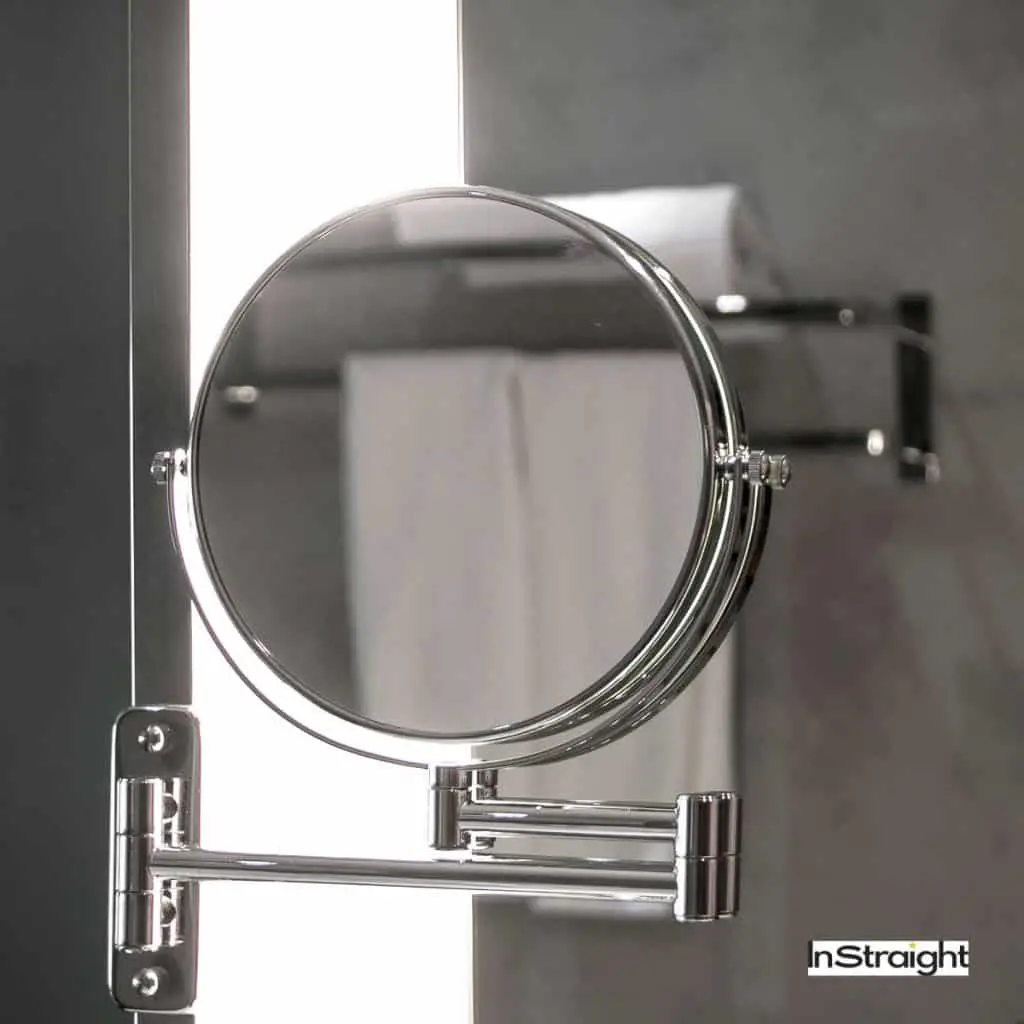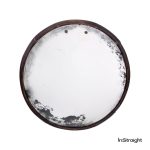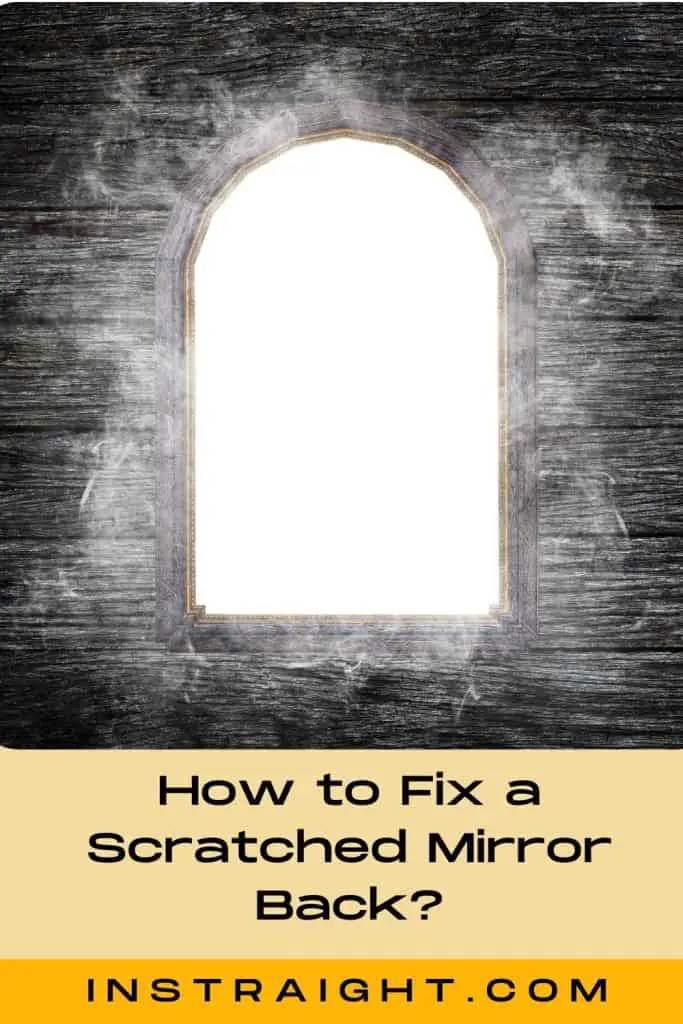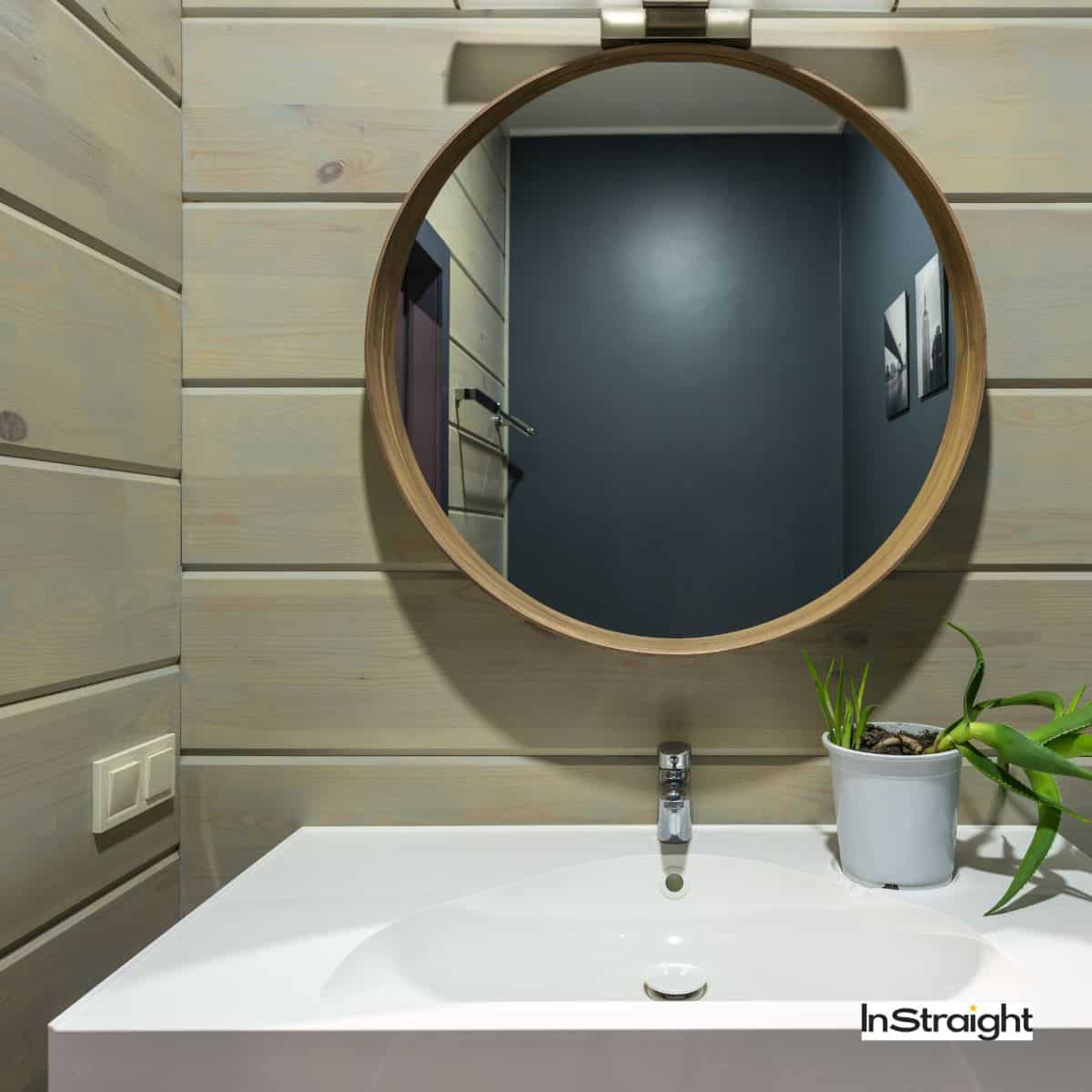Did you know that metal mirrors date as far back as the Egyptians, shaped into representations of Re, the sun god? (1) While yours might not be this antique, you’ll still want to learn how to fix a scratched mirror back.
Although you can try different ways, the most effective is silvering the back. Here’s how:
- Remove the back layer of paint.
- Remove the silver layer.
- Clean the mirror glass
- Add the silvering chemicals
- Repaint the back and clean the front
You might want to check out some tips and tricks on how to remove scratches from mirrors.
What Is Mirror Backing Made Of?
This depends on the type of mirror you’re using. Let’s delve into the science of mirror-making.

Most household or bathroom mirrors are made through metal plating (2). And each metal has its own unique properties that affect the mirror’s functionality, appearance, longevity, and so on.
Some common metals are aluminum, silver, copper, platinum, zinc, and gold. You’ll usually find aluminum and silver the most common metals used for plating.
The difference between aluminum and silver-plated mirrors is the metals’ capacity to reflect. Aluminum ranks lower than silver because it reflects 90% of light, whereas Silver reflects 95%.
Can You Repair A Scratched Mirror Back?
This is contingent on the intensity of the damage, but the answer is usually affirmative. However, some factors about the mirror’s nature will determine the best modus operandi for you.
Usually, the most effective method for mirror restoration is to re-silver it. This is especially true if the backing is covered in deep scratches. Deeper scratches can’t be fixed by just toothpaste, glass cleaners, or a simple piece of aluminum foil.
So, I’ll help you decide on this table if you want to choose a fresh coat of silver or aluminum.
| Silver | Aluminum |
| The most reflective metal | Less reflective than Silver |
| Resistant to damage due to less reactivity | Forms oxides that reduce reflectiveness |
| More costly because of the two protective paints | Costs less because of one protective paint |
| Reflects warmer tones (yellow, red) | Reflects colder tones (blue) |
There’s a third option you can try; remove the copper coat.
Copper-based metal backs are prone to corrosion, so removing copper and lead from the mirror will lead to a longer life and prevent surface contamination that leads to dark spots. (3)
There are ways to deal with light scratches, like toothpaste, silvering sprays, or reflective paints. Before that, consider the difference between household and optical mirrors to know which category your mirror fits into.
The Difference Between Household Mirrors and Optical Mirrors
Household mirrors usually add to the house’s beauty, especially antique mirrors, which is why most people prefer to restore them rather than buy them. This is also why broken mirrors are replaced rather than just thrown away.
Household mirrors are meant to showcase your home and help you see yourself in the best of lights.
On the other hand, optical mirrors are used for scientific purposes, some of which are splitting light, telescopes, and astronomical reasons. I recently learned how mirrors were used in World War II to spy on enemy messages!
But here’s the fundamental difference: optical mirrors are coated in the front, whereas household mirrors use the reflective coating on the backside.
The Best Way To Fix Scratched Mirror Backs
Re-Silver the Mirror
This works best for antique mirrors because they’re usually made with silver backing. You should try this technique if the mirror is generally in good condition, but you’ve observed degradation of the silver layer.
If your mirror has broken glass, it will not be fixed with re-silvering. However, in the case of extraordinary glass formations, or cuttings, re-silvering can help more.
These are the steps for a sheet glass technique. You’ll need a silvering kit for this.
Step 1: Remove the Backing Paint
You’ll need a supportive tray to keep the glass in the mirror separate from the collected wastewater. You can use a cardboard box for this.
Remove the backing paint from the mirror. Use a paint scraper or stripper for this.
Make sure to get all of the backing paint. Let it sit for a bit so it has time to work.
Do a test patch. The paint stripper will have done its job once you see bubbles about to pop up.
Remove all the excess scraper before rinsing the back.
Step 2: Remove The Silver Backing
Then use a mirror remover with cotton to take off the silver backing. There’s a chance the backing is made of silver and copper; remove both.
Apply it in thin coats and rub it all off.
Step 3: Clean The Glass
The next step is to clean the glass. You can’t re-silver without cleaning the glass.
Clean both sides until you’re satisfied all the residue is off.
If you want to go the extra mile, use cerium oxide to polish the mirror. Focus on the edges and clean both sides.
Use a sponge to wipe the glass afterward.
Step 4: Combining The Chemicals
Mesure out distilled water and silver. It’s necessary to use distilled after this stage. If you’re using a silvering kit, mix all the chemicals.
Rinse the glass with distilled water and then pour the tin of silver. Coat it well and rock the glass to even it all out before rinsing it again.
Then add the chemicals you combined. These will be the silver solution, activator, and reducer.
Allow them 3-5 minutes while you rock them on the mirror glass. Make sure to get the edges.
Rinse off the excess before you use backing paint on it again. Thoroughly coat it and dry it overnight.
Clean up the front surface of the mirror, and you’re done!
Watch this video if you need visual aids.
Can Scratched Mirror Silverings Be Fixed With Aluminum Foil?
This is a cost-effective method.
You’ll need a piece of foil. Make sure it’s reflective.
Remove the glass from its frame.
Tape it to the damaged area. Use clear tape so it doesn’t discolor.
Place the mirror back into its frame. Make sure you’ve taped the aluminum, so it faces the backing.
FAQs
Why Do Old Mirrors Get Cloudy?

This happens because of moisture and is a corrosion of the silver.
Can You Use Windex To Clean An Antique Mirror?
It’s best not to. Instead, use a soft cloth, rubbing alcohol, white vinegar, and gathering water.
Conclusion
Mirrors are beautiful decorative objects to place around your home, and it’s necessary to take adequate care of them.

I hope this article gave you an answer on how to fix a scratched mirror back, so let me know what you think in the comments below!
References:
- 1. The History of Mirror: Through A Glass, Darkly [Internet]. Bienenstock Furniture Library. 2015. Available from: https://www.furniturelibrary.com/mirror-glass-darkly/#:~:text=METAL%20MIRRORS%20%E2%80%94%20Mirrors%20were%20used
- 2. Guide to Silver Coating Mirrors vs. Aluminum Mirrors [Internet]. Sharretts Plating Company. 2018 [cited 2022 Oct 25]. Available from: https://www.sharrettsplating.com/blog/silver-aluminum-mirror-coating/#:~:text=Household%20mirrors%20are%20coated%20on
- 3. Munoz M. Aluminum, Silver, and Copper- Free Mirror, what’s the difference? [Internet]. Yushuo Glass. Yushuo Glass; 2020. Available from: https://www.yushuoglass.com/post/aluminum-silver-and-copper-free-mirror-what-s-the-difference
- About the Author
- Latest Posts
I’m just a girl who likes to review everything. I have a sensitive and very dry skin type. Miss Nail Art 2014! Loves makeup & skincare. Read her Latest Articles
Find her on
YOUTUBE AND Instagram. Learn more about her HERE.


